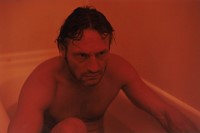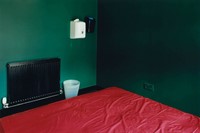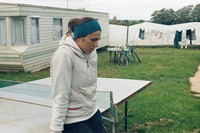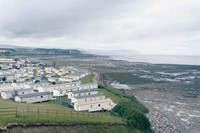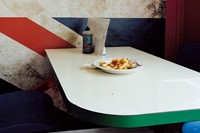Shot over the course of six years, Tim Richmond’s new Loose Joints-published book documents desire and resilience in small-town Somerset
The title of British photographer Tim Richmond’s new book, Love Bites, came via brief encounter at a bus stop in the coastal town of Watchet, west Somerset. “I saw this guy at a bus station – I didn’t have a camera on me, which is one of my great regrets – but he was sporting a major love bite,” Richmond tells AnOther. “He had a half-empty bottle of cider with him and it just seemed like it was something very free and easy … it just set off a train of thought, from this grittiness to a very English moment.”
This scene, alive with the suggestion of a previous story, captures the spirit of Richmond’s new book, which documents an all-but-forgotten 20-mile stretch of coastal mudflats in west Somerset. A microcosm of post-Brexit Britain, Richmond’s book offers a look into the lives and desires of fringe communities who occupy this patch of small-town England – from migrant workers on fruit farms and groups of homeless people, to swingers clubs, pleasure arcades, food banks, and cross-dresser gatherings. Without being deliberately political, the book paints a portrait of commercial decline and struggle. That said, Richmond’s portrayal isn’t by any means a negative one: it simmers with humanity, longing, and a lyrical sort of beauty. The book is chiefly a love letter to the Bristol Channel and the “peculiar Englishness” to be found there.
“There’s other parts of England that have been well documented; you think of the north-east and Chris Killip, and all sorts of beautiful pictures that he’s done,” says Richmond. “And there are other parts like Wales that have been very well documented. But this little section of west Somerset we couldn’t think of anything really, apart from the odd Martin Parr picture at Weston-super-Mare with an ice cream. So it is slightly forgotten; forgotten in the sense of the everyday drive through it, but also forgotten in the canon of history of British photography.”
The new book is the culmination of six years spent documenting the region, and marks Richmond’s second long-term documentary title, after his 2015 book Last Best Hiding Place, which captured the sprawling American midwest over the course of seven summers. Richmond – who moved from Exmoor to Colorado in April last year to be closer to his daughter – switched from fast-paced commercial and fashion photography for publications like Wonderland and Vanity Fair to this slower, immersive style over a decade ago. “Around 2009, my first wife died, and it sort of made a very clear decision,” he says. “I’ve always wanted to do long-term documentary projects, but I’d sort of got drawn into the world of doing portraits, fashion, and other stuff, but it wasn’t feeding my soul.”
This slow, dedicated approach also allows Richmond to build a deep trust with his subjects, photographing some of them several times over a series of years. “There was a great guy called Stu, who lives in a van, and he was very reticent to be photographed initially, but then I photographed him maybe five times over about three years,” says Richmond. “It was always great to see him again; he was definitely a real individual. He looked a bit like someone out of the Pirates of the Caribbean, with this extraordinary face that [was almost like] an Edwardian monarch and then [his body was covered] in tattoos, scars, and piercings. He had this contradiction of the old and the new.”
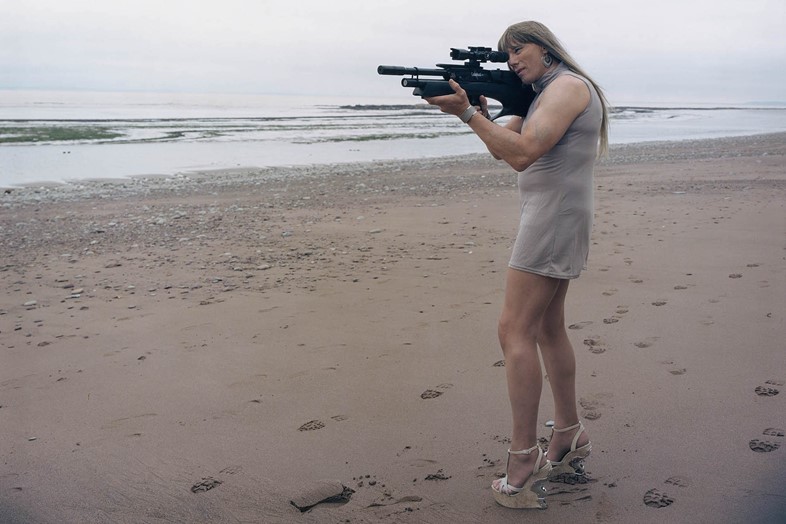
From a boxer poised in a gym to a cross-dresser firing a gun on the beach (visiting the area as part of a mass twice-yearly retreat), Richmond’s portraits have a cinematic quality to them, drawing you into various vignettes and inviting you to create your own narratives. “Cinema is entirely my influence since I was at film school back in the 80s,” says Richmond of his images, which are gently staged but feature real people. “It’s almost like these are stills from a film that was never made.”
Adding to this cinematic feel, while grounding you to the setting, are Richmond’s eerie landscape shots of the area’s tidal mudflats – dramatic expanses that can look more like a desert than the British coast – which are interspersed throughout the book. “I sort of feel strangely also that the places also are like portraits to me,” he says. “Places give off energy, and I genuinely feel that the landscapes have the same sentiments attached to them as the portraits.” Together, the photographs in Richmond’s Love Bites compose a stirring portrait of the Bristol Channel – one which brims with struggle and strangeness, but also real desires and human resilience. “It was about hopefully just letting people be themselves,” says the photographer.
Love Bites is published by Loose Joints and is available now.

